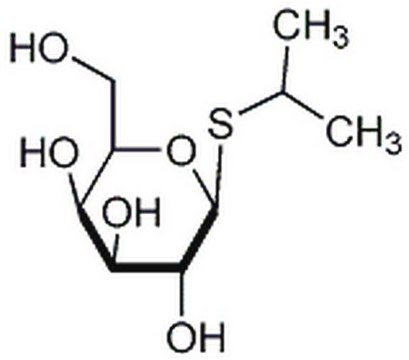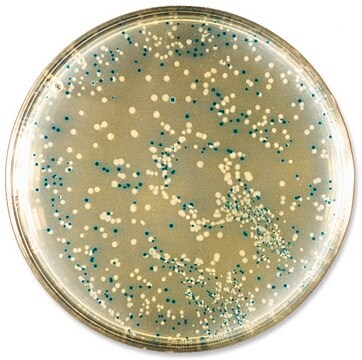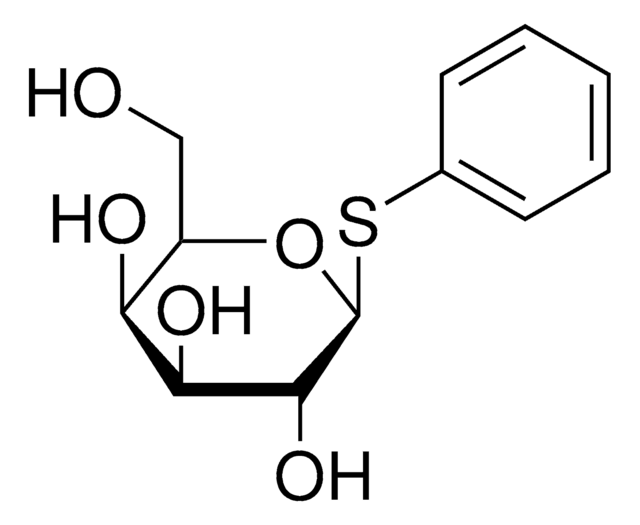IPTG-RO
Roche
Isopropyl-β-D-thiogalactoside
mol wt 238.3, pkg of 1 g (10724815001), pkg of 5 g (11411446001)
Synonym(s):
Isopropyl β-D-1-thiogalactopyranoside, iptg, IPTG, Isopropyl β-D-thiogalactoside
About This Item
Recommended Products
form
powder
mol wt
238.3
packaging
pkg of 1 g (10724815001)
pkg of 5 g (11411446001)
manufacturer/tradename
Roche
shipped in
wet ice
storage temp.
2-8°C
SMILES string
CC(C)S[C@@H]1OC(CO)[C@H](O)C(O)[C@H]1O
InChI
1S/C9H18O5S/c1-4(2)15-9-8(13)7(12)6(11)5(3-10)14-9/h4-13H,3H2,1-2H3/t5-,6+,7+,8-,9+/m1/s1
InChI key
BPHPUYQFMNQIOC-NXRLNHOXSA-N
Looking for similar products? Visit Product Comparison Guide
Related Categories
General description
Application
Other Notes
- amount of template DNA
- purity of template DNA
- conformation of template DNA
- average size of labeled fragment
Specifications
Specific Activity: The described standard assay will results in a specific activity of 1.8 x 109 dpm/μg, corresponding to 65% incorporation with different substrate DNAs in 30minutes. When varying the ratio of template DNA to labeled dNTP, similar incorporation rates, but different levels of specific activity of the labeled probe are obtained.
Preparation Note
10 ng to 3μg template DNA, linearized and at least 100 to 200bp long
Storage conditions (working solution): Stock solutions of the product in water (e.g., 1 M IPTG) stored at -15 to -25 °C, are stable up to six months.
Storage Class Code
11 - Combustible Solids
WGK
WGK 1
Flash Point(F)
Not applicable
Flash Point(C)
Not applicable
Certificates of Analysis (COA)
Search for Certificates of Analysis (COA) by entering the products Lot/Batch Number. Lot and Batch Numbers can be found on a product’s label following the words ‘Lot’ or ‘Batch’.
Already Own This Product?
Find documentation for the products that you have recently purchased in the Document Library.
Customers Also Viewed
Our team of scientists has experience in all areas of research including Life Science, Material Science, Chemical Synthesis, Chromatography, Analytical and many others.
Contact Technical Service









